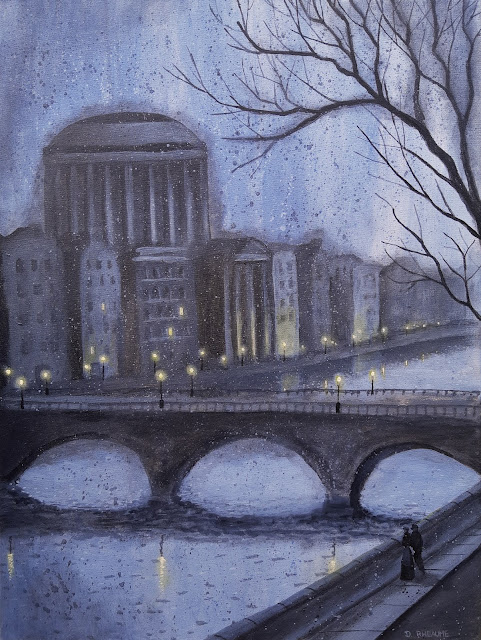Nocturne

Dublin Nocturne The Miriam Webster dictionary describes a nocturne as follows: a work of art dealing with evening or night, especially: a dreamy pensive composition for the piano. I can't speak much to the musical version of this definition, suffice to say some or my favorite classical pieces are nocturnes. Perhaps my favorite of all is Ravel's 'Pavane for a Dead Princess", which I used as the score for a Youtube video... The person who coined the phrase "nocturne" in regards to painting was none other than James Abbott O'Neill Whistler. Yes, him. The guy that so famously painted his mother: He described the nocturne style as one that depicts scenes evocative of the night or subjects as they appear in a veil of light, in twilight, or in the absence of direct light. More generally, the term can be applied to any painting of a night scene. Whistler not only named the style but was a master of it, as the following examples show: "Nocturne in Blue an

